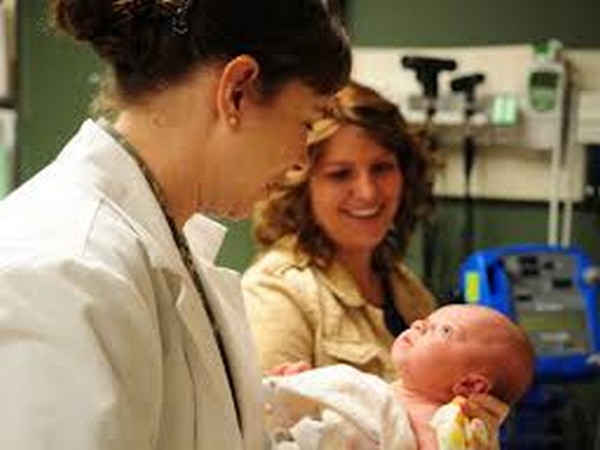Washington: A recent research has discovered that the mode of delivery influences the health of infants.
The research presented at the meeting of ECCMID 2019 suggested that mode of delivery influences the development of the microbial composition of the gut (i.e. the gut microbiota) in infants, independently of a mother’s use of antibiotics. This, in turn, may affect infants’ respiratory health during the first year of life.
The prospective Microbiome Utrecht Infant Study involving 120 infants, found that children born by cesarean section (C-section) had a delay in the normal development of their gut microbiota, and a higher abundance of potentially harmful bacteria, compared to infants delivered vaginally- which could be the mechanism driving the increased risk in respiratory infections.
Over 1000 different types of bacteria live in the gut, where they elicit important functions for health, for example helping to digest food, stimulating the development of the immune system, and protecting against infection.
After birth, infants become colonized by an increasing diversity of gut microbes until a relatively stable state is reached. The pace and pattern by which infants acquire their gut microbiome are thought to have a substantial impact on health in later life. Disruption of the normal development of the gut microbiome has been linked with a range of diseases including irritable bowel disease, asthma, allergies, and cancer.
Previous research indicated that early life microbiota development is influenced by the mode of delivery, although it has been suggested that this depends mostly on maternal antibiotic exposure.
To assess the independent effects of mode of delivery analyzed the gut microbiota development in 46 C-section and 74 vaginally delivered infants using stool samples collected 10 times during their first year of life.
Antibiotic administration to mothers undergoing a C-section was postponed until after clamping of the umbilical cord. Maternal stool samples were also examined two weeks after delivery.
Analyses showed that gut microbiota composition differed significantly between C-section and vaginally delivered infants in the first year, which was most pronounced shortly after birth.
This was accompanied by measurable fecal seeding (transfer of maternal vaginal microbes) from mother to child in vaginally delivered infants, but not in children born by C-section.
In infants born by C-section, the gut microbiota was less stable and the development of the health-promoting bacterial species Bifidobacterium spp. was delayed compared to vaginally delivered children.
Additionally, infants born by C-section had much higher levels of potential pathogenic gut bacteria, irrespective of the length of hospital stay after birth, feeding type, and antibiotic use.
Interestingly, the researchers also found that the gut microbiota early in life was associated with the total
the number of respiratory infections over the first year.
“Our findings suggest that mode of delivery affects the developing infant gut microbiota, independent of a mother’s use of antibiotics during birth. Compared to vaginally delivered infants, children born by C-section have different trajectories of bacterial colonization, which could have implications for their future respiratory health”, said Marta Reyman, who is the Ph.D. student on this study.
“Further research and larger studies will be needed to fully understand the consequences of these changes. The insights gained might help to design strategies to prevent health-related problems following birth by C-section, Reyman added.
The major limitation of this study is the use of 16S rRNA based sequencing, which does not allow annotation of bacteria on a species level or generates results based on genetic content of microbial communities.
[source_without_link]ANI[/source_without_link]

